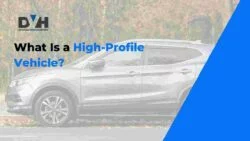The automotive industry has over the years grown from the production of regular mechanical vehicles to high-tech vehicles with improved performance, safety, and overall reliability. Technology is changing the automotive industry as we know it and making lives better with daily improvements. Advancements in technology have had a huge effect on the automotive industry over the years, and in this article, we will discuss the impact of technology on the automotive industry.
Automotive Industry and Technology
The automotive industry and technology are intertwined currently, as every automotive industry and manufacturer is actively looking for ways to improve their vehicles technologically. Currently, a regular car is 90% hardware and 10% software. With steady advancements in technology, the automotive industry proposes to manufacture vehicles with 40% hardware, 40% software, and 20% content.
Manufacturing Automobiles: Easier and Faster
The manufacturing process of vehicles in the automotive industry is one area that has been significantly improved over time. In the early days, vehicles were built solely by hand, and this was a time-consuming process. For the production of one vehicle, manufacturers required lots of manpower and skill, and it wasn’t a cost-effective process. With the introduction of automation in the automotive industry, vehicles can be manufactured in a fraction of the time they used to take. In other words, with these new processes, manufacturers had faster production, which led to higher sales and more profits.
Apart from automation, other technologies such as robots and 3D-printing machines also help to speed up automobile and spare parts production while reducing the total costs of production. This way, vehicle owners seeking spare parts are provided with relatively cheap spare parts for their vehicles. So far, technology in the automotive industry has continued to advance daily and has led to the manufacture of self-driving cars, electric vehicles, hybrid cars, high-tech safety features, modified interior and exterior features, and more.
Safety Improvements
Safety features are designs and features put in cars to reduce the chances of fatalities in an accident or crash. The safety ratings, usually included in a vehicle’s window sticker, are a measure of how safe a vehicle is on the road. The high-tech safety features included in vehicles today to limit the effects of crashes are:

These advancements point towards increased safety, better fuel efficiency of vehicles, higher safety ratings, improved vehicle performance and reliability, and, for the manufacturers, improved car sales.
To determine your vehicle’s safety features and ratings, it is recommended that you generate a window sticker with Detailed Vehicle History window sticker lookup tool. A window sticker is a label that contains the year, make, and model of a vehicle, interior and exterior features, warranty information, safety and security features, fuel economy, NHTSA safety ratings, and more.
ALSO READ: How to Check if Your Car is All-Wheel Drive (AWD)
Electric vehicles: Improved and cheaper to maintain
The advent of electric vehicles in the automotive industry is one of the most significant impacts of technology on the industry. The first electric vehicle was produced in the 1890s, but it did not receive the attention of the car market because, compared to gasoline-powered vehicles, it had less range and fewer features. Technology in the automotive industry has led to improvements in electric vehicles in terms of vehicle features and battery technology.
These vehicles are widely recognized and used because they are environmentally friendly. This means that with advancements in technology in the automotive industry, car drivers can potentially reduce their carbon footprint, reduce air pollution, and curb global warming.
Another advantage of electric vehicles is that they cost less to maintain compared to gasoline-powered vehicles. Electric vehicles are easy to keep up with compared to gasoline vehicles because they are powered by electricity, which is relatively cheaper than gasoline. According to Forbes, it costs $0.06 per mile to maintain electric vehicles and $0.10 per mile for conventional ICE-powered vehicles.
ALSO READ: 5 most reliable Chevrolet Silverado models
Self-Driving Vehicles.
Self-driving vehicles, also referred to as autonomous vehicles, are another impact of technology on the automotive industry. What are self-driving or autonomous cars? As the name suggests, they are simply vehicles that drive themselves. Self-driving vehicles are part of the emerging technologies in the automotive industry that may positively influence transportation from place to place and remove the need for drivers.
With advancements in technology in the automotive industry, self-driving cars are provided with the right equipment, consisting of sensors, cameras, GPS navigation, and so on, to navigate roads and identify obstacles. More importantly, these cars are built with artificial intelligence that allows them to learn continuously on the road and adapt to different driving conditions.
Having autonomous vehicles as one of the technology trends in the automotive industry comes with the following advantages:
Connected vehicles; Accurate information transmission
According to statistics, 41% of new cars purchased in 2020 will be connected vehicles—around 30 million connected vehicles. Connected vehicles are cars that are designed to communicate with other cars and devices. They are equipped with internet connectivity and can transmit car information and easily communicate with other cars. This in turn optimizes traffic flow, reduces congestion, and reduces travel times as cars can communicate with each other and also with their environment.
Technology has over the years grown in various sectors, with significant growth in the automotive industry. The technology trends in the automotive industry have led to the introduction of improved vehicle manufacturing, safety improvements, electric vehicles, self-driving or autonomous vehicles, and connected vehicles. With these technologies and steady advancements, the automotive industry improves vehicle safety and efficiency while reducing carbon emissions and making lives easier.










